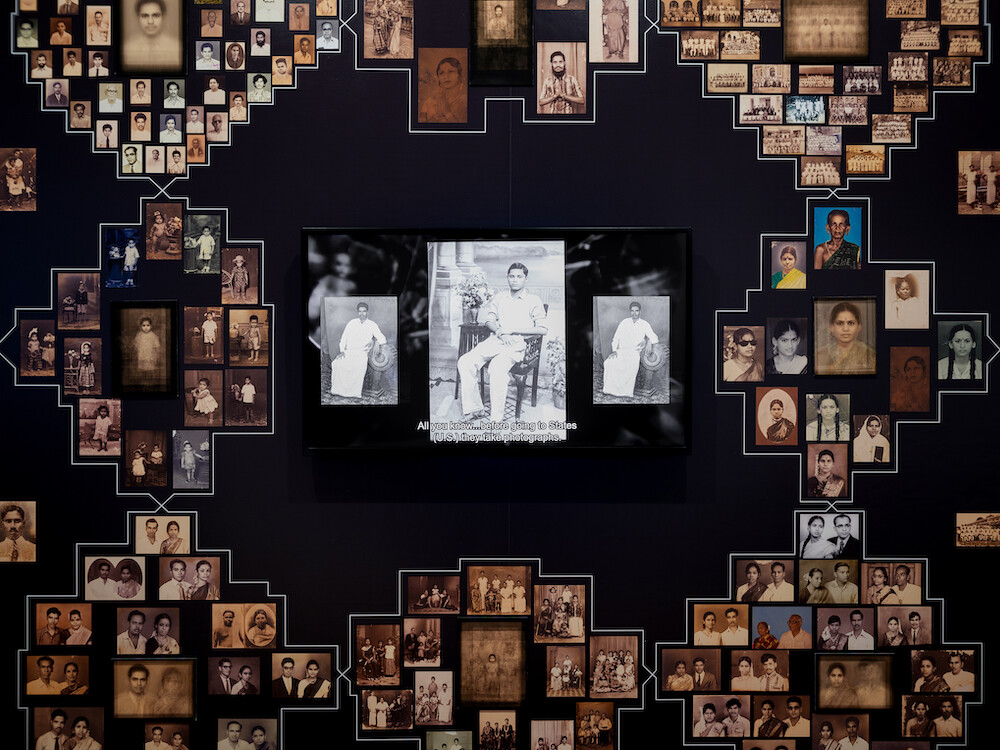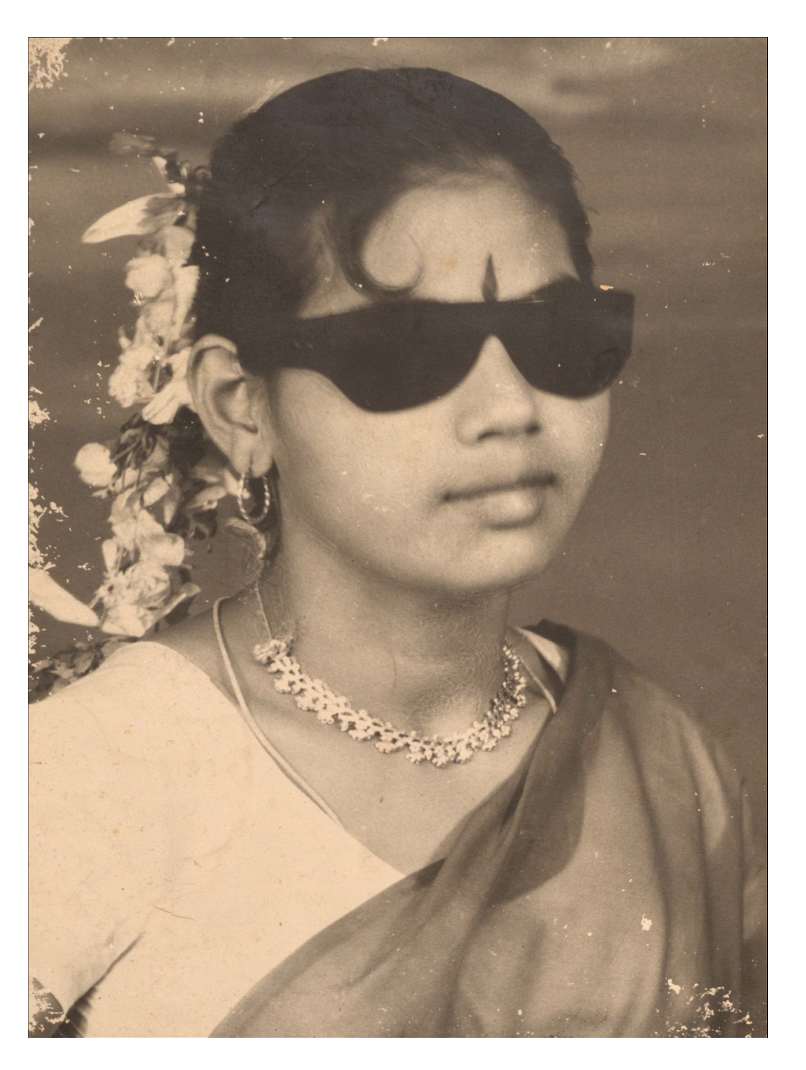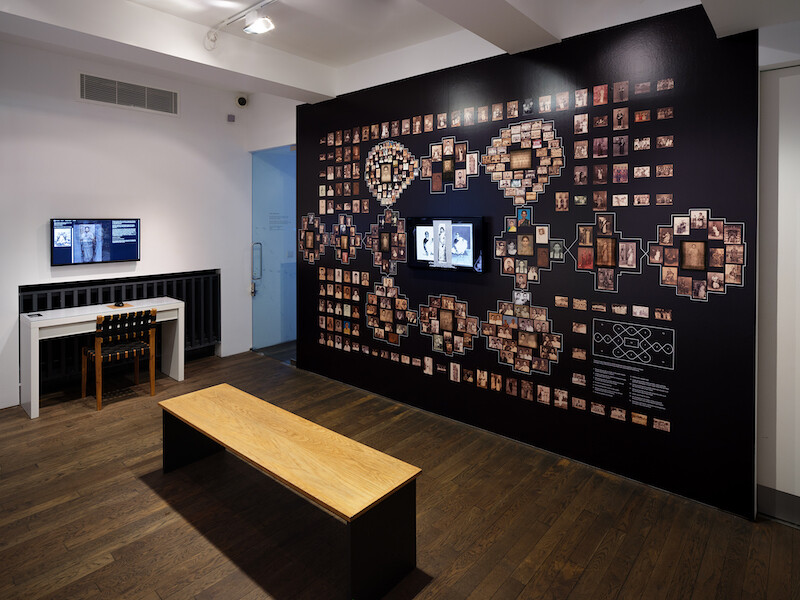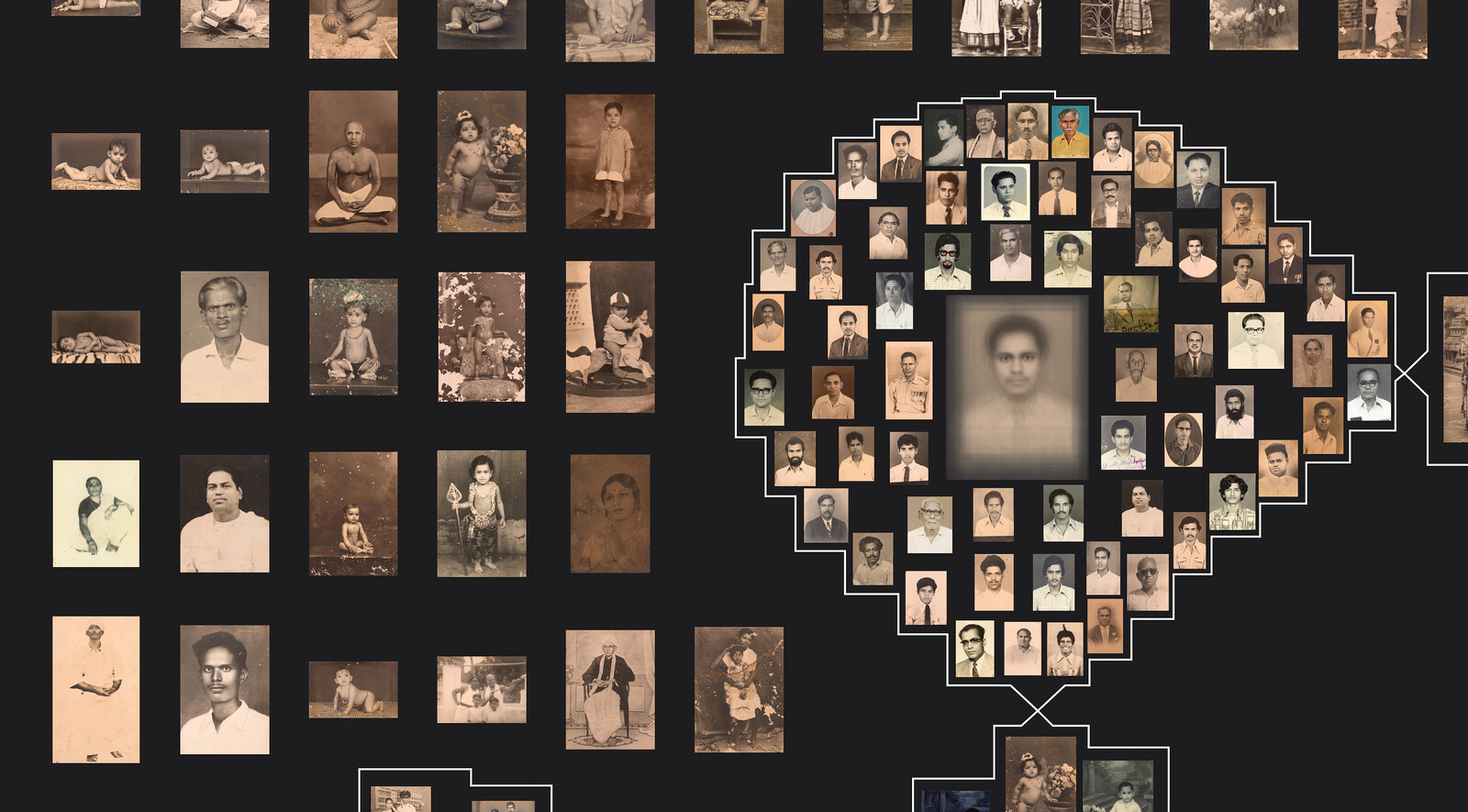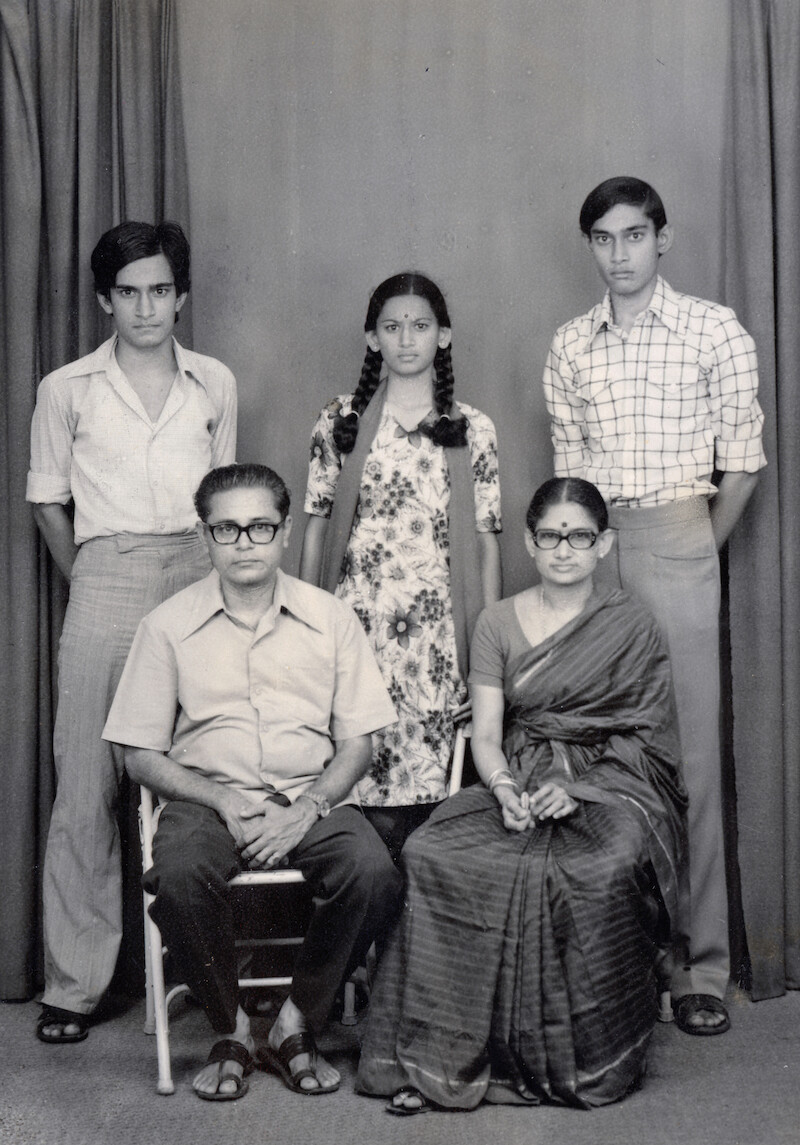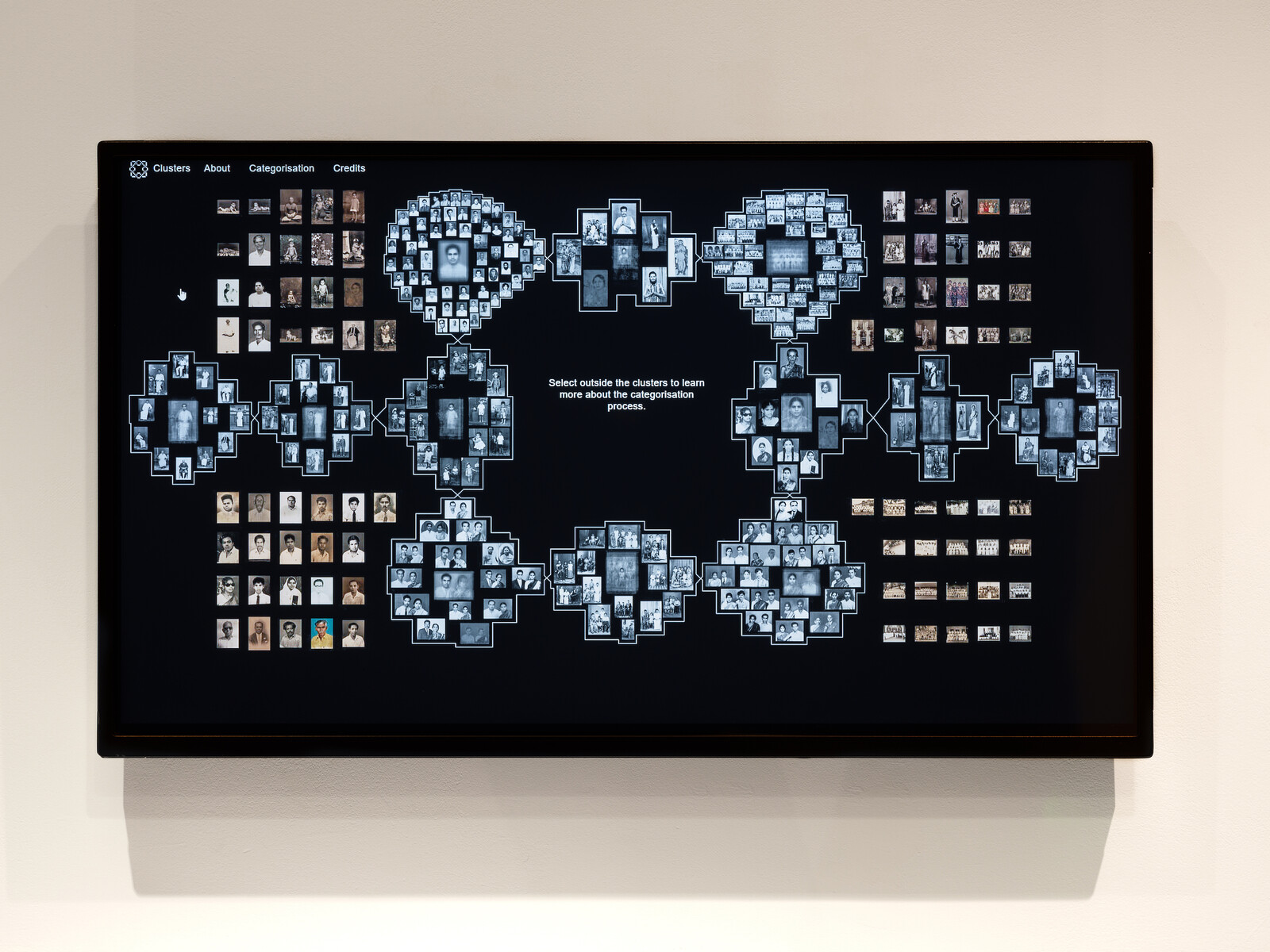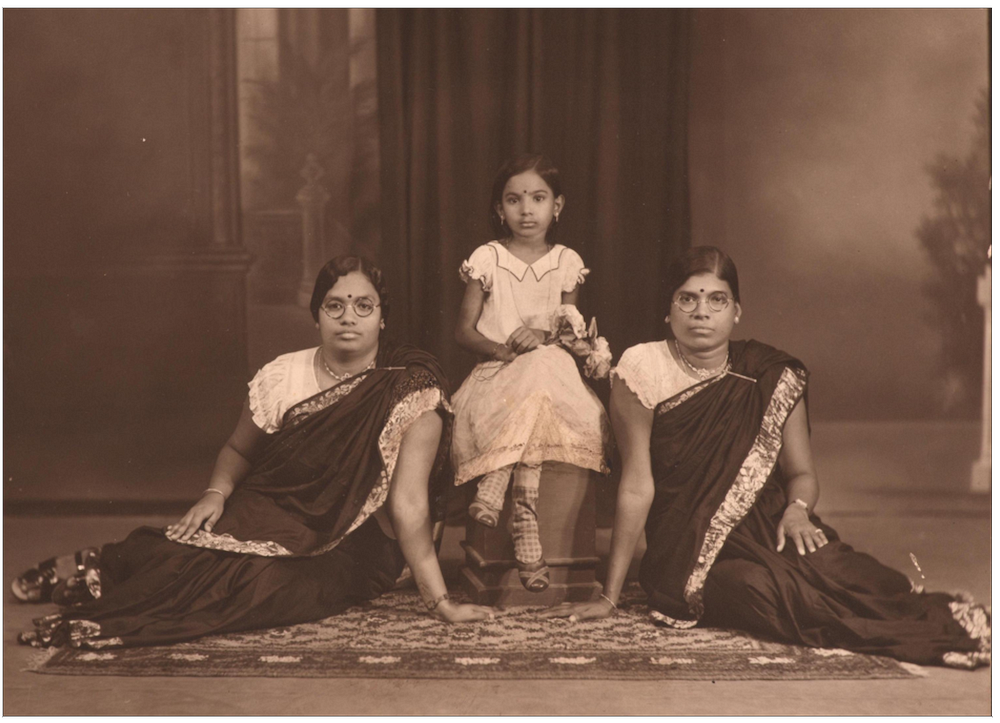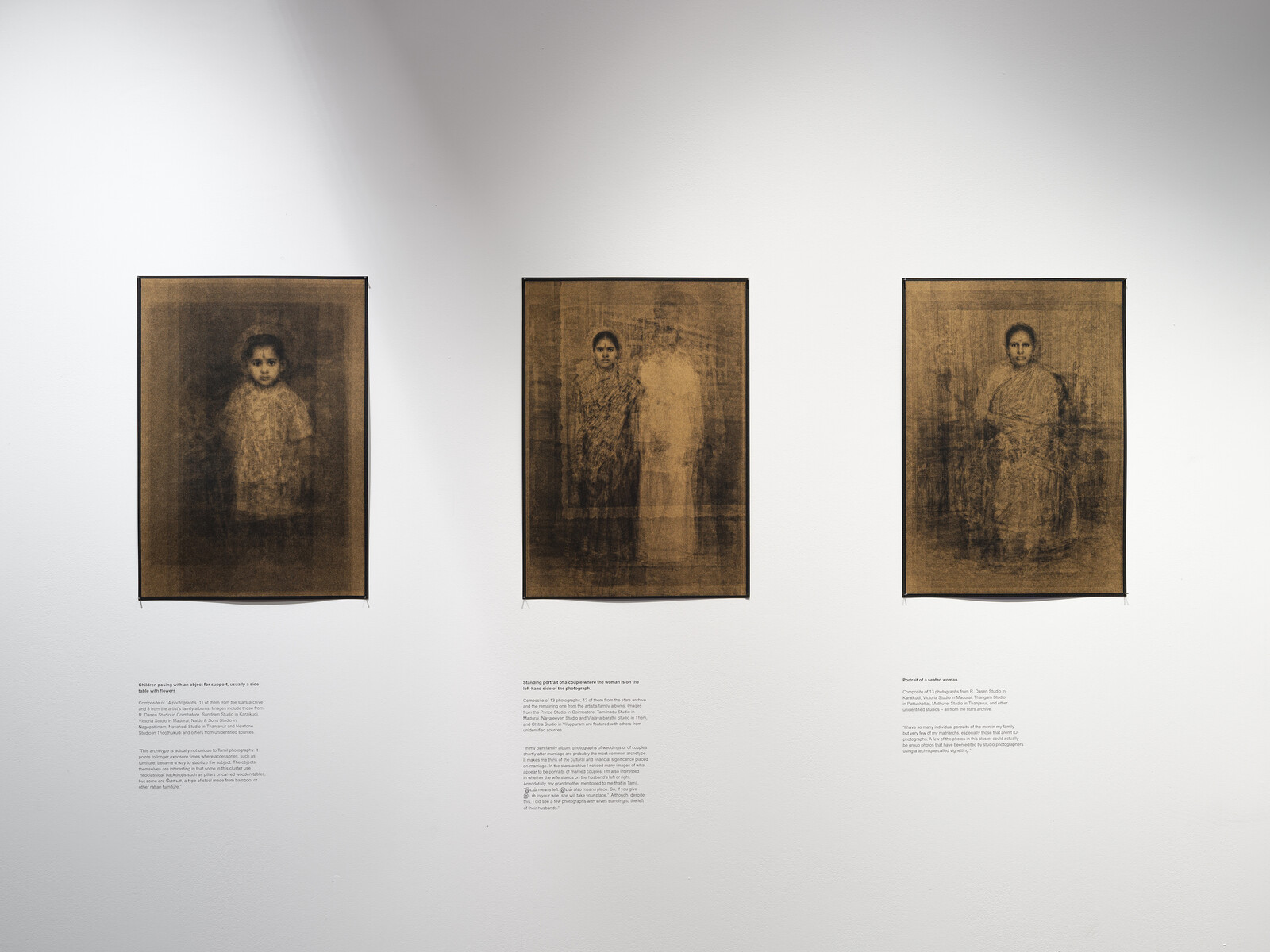Aarati Akkapeddi’s work exploits the uneasy interaction of analog and digital—paper and pixels—to convey the strangeness of both our warped view of the past through dog-eared images and the mediation of the present by algorithmic technologies. “A·kin,” at London’s Photographers’ Gallery, continues the Telugu-American artist and programmer’s practice of using machine-learning algorithms to analyze and manipulate historical images.
The installation combines Akkapeddi’s family photographs from the south Indian state of Tamil Nadu with those from an archive created by the STARS research collective of Tamil studio photography from the 1880s to the 1980s.1 Akkapeddi used an image classification model called VGG-16 to sort the photographs into a grid based on formal similarity, and then divided them into twelve generic groups: portraits of children propped up by an object, for instance, and close-ups of couples in which the man stands on the left. These “clusters” are arranged across a gallery wall within the interlocking forms of a kolam—a pattern drawn with rice flour at the entrance of Tamil homes to bring good fortune and exclude evil spirits. A larger composite image at the center of each group collates the surrounding photographs as if to identify what they share, while interviews with relatives and researchers feature in a video at the center of the kolam. The resulting display is part science poster, part family tree.
Akkapeddi uses the VGG-16 algorithm to make sense of the material—yet they also value AI for its poetic potential.2 With its generalizations and inaccuracies, they argue, AI expresses how historical memory mutates as it is passed down through generations. Perhaps the spectral composites are more truthful representations of our blurry view of the past than the sharp photographs of which they are composed.
Under close, extended observation, however, the structural logic of the clusters dissolves into a multitude of distinct personalities. A girl wearing flowers in her hair and what appear to be black Wayfarer sunglasses (the artist speculates that they are cut from cardboard); a man with an immaculate, wavy quiff, looking suitably proud; two men standing close together, one holding the other’s shoulders tight.3 There is Akkapeddi’s uncle in his youth with an overpainted moustache which, he admits in the video, “is just a fantasy.” Some couples appear relaxed in each other’s company, others deeply uncomfortable, with expressions that cry: “how did I get here?” Some look alarmed by the camera, others pleased to be immortalized by it.
The interest of “A·kin” is not only in its engagement with intergenerational memory but also in the tension it sets up between system and individual. While the extent to which the subjects conform to the pictorial types of their respective groupings is remarkable, they nevertheless assert themselves—with their expressions, gestures, outfits—against the structure in which they are placed. The mysterious details in every face and pose come to stand for the singularity of these people and their lives despite the homogenizing force of social convention that the clusters visualize.
The work brings two distinct conceptualizations of the archive into dialog. The family photographs, oral histories, and kolam epitomize the view—so prevalent in contemporary art—of the archive as a repository of cultural heritage: a space for interpreting and reanimating the past. The treatment of portrait photographs as data to be categorized, meanwhile, recalls the more critical approach of Allan Sekula. Tracing the development in the nineteenth century of systems for cataloguing criminal identification photographs, Sekula describes the archive as a way of managing images which enables them to be used to monitor, classify, and control their subjects.4 Akkapeddi’s process does not share the disciplinary function of the constabulary filing cabinets and physiognomic diagrams Sekula analyzes. Yet it is similar in its concern with converting photographs into statistics with which to investigate, and taxonomize, a population. Akkapeddi presents the algorithmic processing of images as a continuation of earlier panoptic technologies, a form of social control at odds with the irreducible vibrancy of life.
Living within the algorithmic structures of the internet, we may begin to identify with the subjects of the photographs. We see ourselves becoming datapoints: tracked, categorized, manipulated. By simultaneously embodying these two approaches to the archive—as a source of knowledge and an oppressive technology—“A·kin” articulates the trade-off which defines virtual life: you can have access to seemingly unlimited information and connection if you accept equally extensive surveillance and control.
See Studies in Tamil Studio Archives and Society Archive (STARS) homepage: https://stars.hypotheses.org.
See Aarati Akkapeddi’s visiting artist talk at the University of Minnesota (November 10, 2022), https://www.youtube.com/watch?v=qO65WpF_3HM.
The interactive online iteration of Aarati Akkapeddi’s “A·kin” is accessible at https://unthinking.photography/projects/akin/kolam.html.
Allan Sekula, “The Body and the Archive,” October, 39 (Winter 1986): 3–64.
